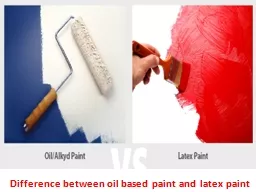PPT-Importance of Color Painters first used charcoal
Author : opelogen | Published Date : 2020-06-22
Early artists used ochre to add red Colors are not always the same from culture to culture Blackbody Radiators A theoretical model of how objects emit radiation
Presentation Embed Code
Download Presentation
Download Presentation The PPT/PDF document "Importance of Color Painters first used..." is the property of its rightful owner. Permission is granted to download and print the materials on this website for personal, non-commercial use only, and to display it on your personal computer provided you do not modify the materials and that you retain all copyright notices contained in the materials. By downloading content from our website, you accept the terms of this agreement.
Importance of Color Painters first used charcoal: Transcript
Download Rules Of Document
"Importance of Color Painters first used charcoal"The content belongs to its owner. You may download and print it for personal use, without modification, and keep all copyright notices. By downloading, you agree to these terms.
Related Documents














